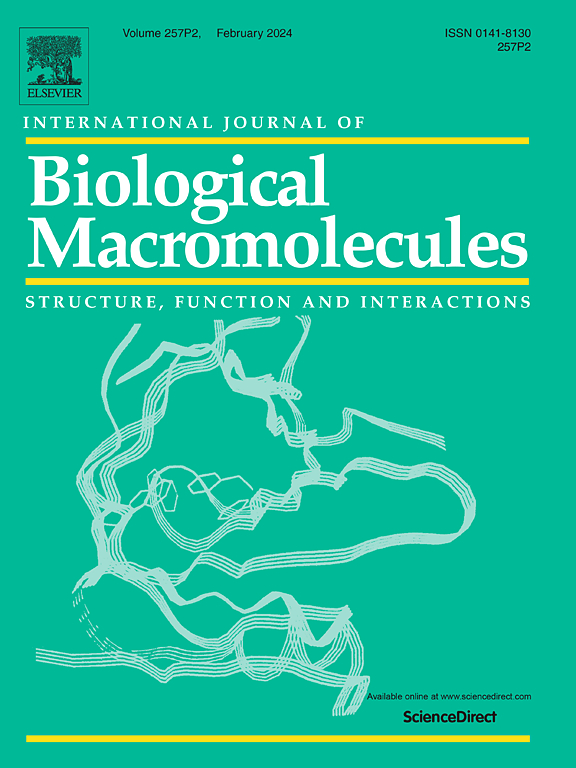用柠檬皮渣制备柑橘纤维:结构和内源性果胶成分对柑橘纤维乳化特性的影响。
IF 7.7
1区 化学
Q1 BIOCHEMISTRY & MOLECULAR BIOLOGY
International Journal of Biological Macromolecules
Pub Date : 2024-12-01
DOI:10.1016/j.ijbiomac.2024.137679
引用次数: 0
摘要
本研究评估并比较了不同程度果胶提取后制备的柑橘纤维与未经处理的柑橘纤维在结构和理化性质上的差异。结果表明,果胶的部分水解和内部果胶的释放会使柑橘纤维的理化性质随着处理时间的延长呈现先升高后降低的趋势,结晶度和热稳定性稳步上升。CF-5 h 的持水量(15.81 g/g)、膨胀量(12.50 mL/g)和持油量(3.33 g/g)仍明显高于 CF。扫描电镜结果表明,在果胶提取时间为 5 小时时,此时制备的 CF-5 h 细胞壁内部网络结构的疏松度达到最大。同时,用 CF-5 h 制备的乳液具有最佳的乳化性能,其特点是乳液粒径最小(d4,3 = 10.40 μm)、流变性能最好、乳液稳定性极佳。总之,经过一定程度果胶提取后制备的柑橘纤维在理化性质和乳化性能方面都表现出了良好的性能。本文章由计算机程序翻译,如有差异,请以英文原文为准。

Preparation of citrus fiber from lemon peel residue: Effects of structure and endogenous pectin components on emulsifying properties of citrus fiber
This study evaluated and compared the differences in structure and physicochemical properties between citrus fibers prepared after different degrees of pectin extraction and untreated citrus fibers. The results showed that the partial hydrolysis and release of internal pectin would cause the physical and chemical properties of citrus fibers to show a tendency to increase and then decrease with treatment time, with a steady increase in crystallinity and thermal stability. The water-holding capacity (15.81 g/g), swelling capacity (12.50 mL/g), and oil-holding capacity (3.33 g/g) of CF-5 h still remained noticeably higher than those of CF. The SEM results demonstrated that at the pectin extraction time of 5 h, the internal network structure of the cell wall of CF-5 h prepared at this time was maximized in terms of looseness. Meanwhile, the emulsion prepared from CF-5 h had the best emulsification properties, which were characterized by the smallest emulsion particle size(d4,3 = 10.40 μm), the best rheological properties, and excellent emulsion stability. Overall, the citrus fibers prepared after a certain degree of pectin extraction showed good performance in terms of physicochemical properties and emulsification performance.
求助全文
通过发布文献求助,成功后即可免费获取论文全文。
去求助
来源期刊
CiteScore
13.70
自引率
9.80%
发文量
2728
审稿时长
64 days
期刊介绍:
The International Journal of Biological Macromolecules is a well-established international journal dedicated to research on the chemical and biological aspects of natural macromolecules. Focusing on proteins, macromolecular carbohydrates, glycoproteins, proteoglycans, lignins, biological poly-acids, and nucleic acids, the journal presents the latest findings in molecular structure, properties, biological activities, interactions, modifications, and functional properties. Papers must offer new and novel insights, encompassing related model systems, structural conformational studies, theoretical developments, and analytical techniques. Each paper is required to primarily focus on at least one named biological macromolecule, reflected in the title, abstract, and text.

 求助内容:
求助内容: 应助结果提醒方式:
应助结果提醒方式:


